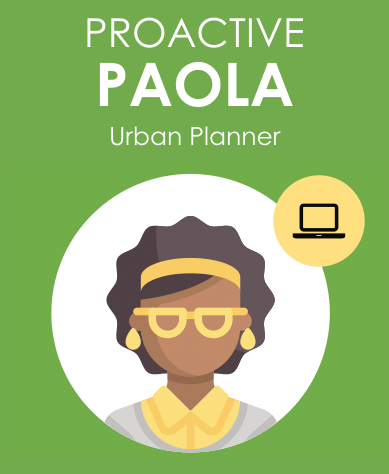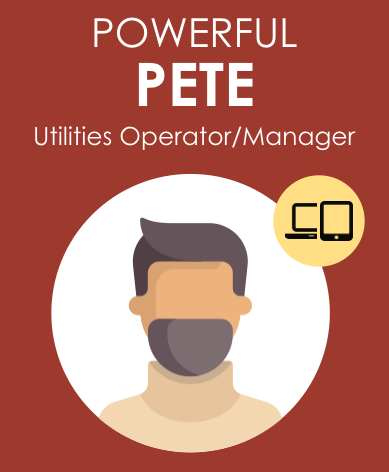Identifying our users
Two stakeholder workshops were organized to bring together industry, academic, and government participants to better understand their day-to-day challenges. Through user inputs, we identified a robust list of user personas to help guide the initial content and relationships needed in an urban flooding focused knowledge graph.
Emergency Erica
Emergency Manager/Responder
Erica is a government professional with expertise in science and management. She manages the emergency response during natural disasters. She needs to coordinate with several agencies, make quick decisions and communicate with first responders. She would like actionable information ahead of time during floods.
Goals
- Provide information first responders need
- Communicate extent, impact, & damage of flooding
- Fast & efficient deployment during operations
- Ensure safety of all responders
- Prevent further damage
Pain Points
- Lack of timely and accurate information
- Visualization tools for fast response
Needs
- An easily accessible interface displaying real-time and forecast flood depths and extents
- Flood inundation over a map interface
- Areas at risk or already damaged
- Severity of flood for determining rescue methods
- Information on block-level population impacts
- Best transportation routes
Stormwater Susan
Stormwater/Sewer Manager
Susan is a water resources engineer in Wilmington, NC. She is in charge of designing, maintaining and managing the city’s municipal stormwater and sewage system.
She’s tech-savvy and would like to plan in advance and make decisions to minimize flood risk.
Goals
- Design & implement urban water resources projects
- Support community response to emergencies
- Ensure safe operation of urban water infrastructure
- Minimize costs related to repair & rehabilitation
- Ensure optimal water quality for public safety
Pain Points
- How are stormwater systems impacted
- Lack of real-time and forecast information
Needs
- Short-term risk to stormwater & sewer systems
- Which pumps to activate to reroute the flow?
- Where to hold the volume until flooding subsides?
- How will loss of power affect system?
- Estimation of damage & restoration costs
- Long-term system design for reducing flood risk
- Assess vulnerability of water infrastructure
- Reduce risk of future overflows
Powerful Pete
Utilities Operator/Manager
Pete is a utilities engineer residing in Charleston, SC. He is responsible for monitoring and maintaining the city’s power infrastructure.
He is computer savvy and runs simulation models for failure analysis and evaluates risk propagation across other systems during floods.
Goals
- Maintaining stability/continuity of power system
- Analyze cascading impacts of power systems failure
Pain Points
- Modeling effect of wind and flood damage
- Employees need to travel to ‘high risk’ areas
- Finding ‘flood resilient’ locations for substations
Needs
- Event-driven, short-term flood risk to power systems
- Risk to internal grid dynamics
- Risk propagation to other infrastructure
- When to reinstate inactive substations?
- Finding best routes for utility workers
- Where to pre-stage employees for rapid reinstatement?
- Long-term planning & system vulnerability analysis
- Designing flood resilient power systems
Proactive Paola
Urban Planner
Paola is a professional living in Minneapolis, MN managing a team developing technologies for smart & resilient infrastructure. Her team is trying to understand the effects of urbanization & climate change on urban systems. Her work includes analytics, exploring alt. scenarios, & communicating the importance of climate resilience.
Goals
- Safe and sustainable development
- Advocating progressive climate policies
- Implement Best Management Practices (BMPs)
Pain Points
- Evaluating green infrastructure projects
- Uncertainty in future projections
- Producing data for driving government policies
- Communicating ‘risk’ to society
Needs
- How will future climate & land use impact flooding?
- What infrastructure can mitigate flood impacts?
- Delineating 'high risk' areas for implementing BMPs
- Decision tools and alternative scenario modeling
- Understanding failures through visualization tools







